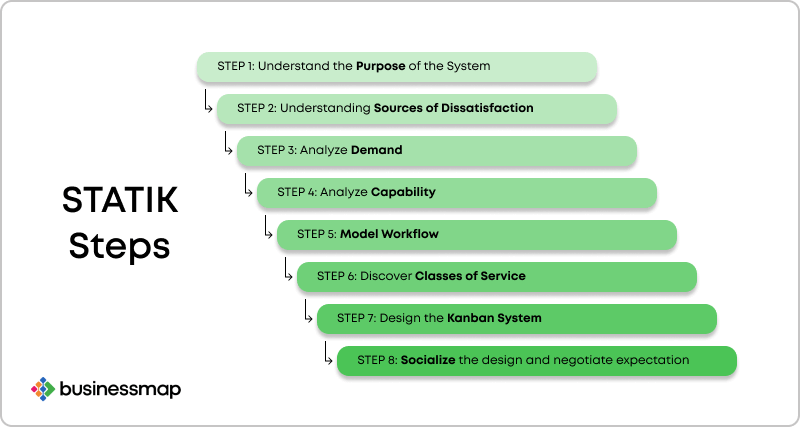The internet is full of stories of successful Agile transformations, but I'd like to start this article by sharing my experience that didn't end well.
When I was an intern in a media production company, I saw an attempt for an overnight Agile transformation. One day, the C-level executives decided to "go Agile." All employees received an email notification for upcoming Agile training and user credentials for a new digital tool. My task was to onboard everyone as soon as possible.
You've probably guessed that it didn't work as planned. Not long after, the upper management gave up on Agile because it didn't see any improvements in the teams' performance.
So, what's the moral of the story? Agile is not a silver bullet that can magically help you improve your processes. Instead, you need a clear strategy to implement it, just like any other new management concept.
The same thing applies to Kanban.
So, if you have decided to introduce Kanban to your team/organization, keep reading below to find out how you can strategically implement it with the help of STATIK.
What Is STATIK?
STATIK stands for Systems Thinking Approach to Implementing Kanban. It focuses on analyzing your complete work system of interdependent services so you can apply global rather than local optimizations.
The Kanban STATIK Steps Explained
The STATIK technique is organized into 8 steps that are not necessarily sequential but iterative, so the information from every step informs the others.
STEP 1: What Makes the Service Fit for Purpose for the Customer?
Kanban is famous for its evolutionary principle of "start with what you do now". Therefore, the first step of STATIK is to explore who your customers are and how you generate value for them.
To put this into practice, ask yourself these questions:
- What does your team/organization do? This is a simple way to create a clear vision of your value proposition.
- Who are you doing it for? Who are your customers, and what service delivery do they require?
- Why are you doing it? Ask yourself how your product or service impacts your customers.
After clarifying everything, look to understand the criteria that define your customer satisfaction. Known as "fit for purpose" criteria, they are usually related to delivery time, quality, and predictability, among others.
STEP 2: Understanding Sources of Dissatisfaction with the Current System
The second step of the approach calls for getting information about internal and external sources of dissatisfaction with the current system. The internal sources relate to everything that prevents your team from delivering on expectations. Typical examples are when your team feels overloaded or is not producing high-quality products/services due to time constraints. The external sources of dissatisfaction derive from your end-users. They could be anything from unpredictable/late delivery to poor quality.
To identify the sources of dissatisfaction, you can take these steps:
- Ask your customers and your teammates what makes them unhappy.
- Collect and visualize the answers in one single place.
- Group them into two categories: internal and external.
Understanding the sources of dissatisfaction is essential to managing your expectations so you can build a work management system that addresses them.
STEP 3: Analyze Demand
To design a Kanban system, you need to understand the nature of the customer demand. In other words, you should analyze:
- Where new work comes from? - While work could come internally from teams in your company, it could also be requested to you directly by customers or other relevant third parties.
- What is the arrival rate of new requests? - The arrival rate metric helps you understand how many new requests on average enter your system within a specific period.
- What are your customer's expectations? - What do your customers want, and when do they expect to receive it?
Identifying your work item types is an important part of this step because it will help you manage customer demand better. For example, a support team can categorize their work categories into two types - internal improvements and external customer requests.
STEP 4: Analyze Capability
The next step is to analyze the delivery capacity. The idea is to explore whether your team's capacity matches the demand. If your team has more work than it can take on or vice versa, either it will be late with delivery, or it won't be efficient enough.
When the analysis is complete, you should compare current capabilities with your customers' service level expectations. Looking at some historical data can give you knowledge about how much work, on average, you can handle so that you can take the necessary steps to improve.
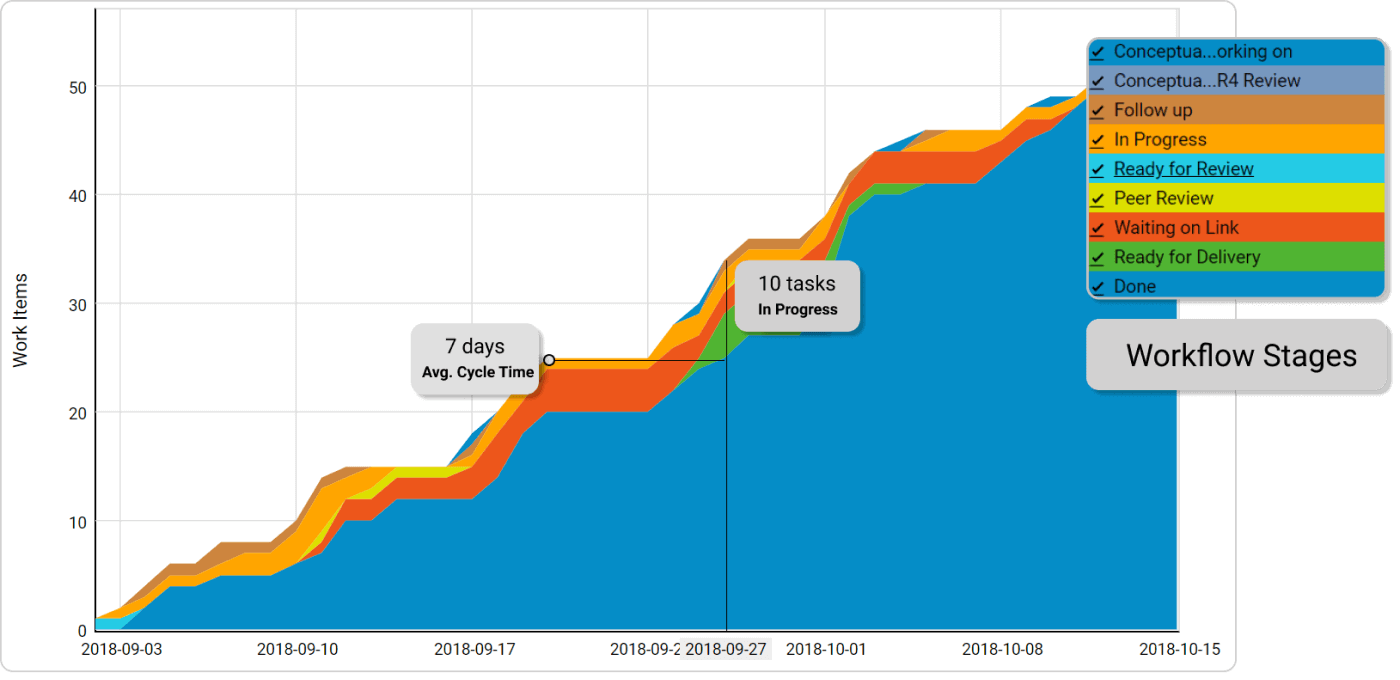 Cumulative flow diagram for analyzing work arrival and departure rates
Cumulative flow diagram for analyzing work arrival and departure rates
STEP 5: Model Workflow
Workflow modeling is mapping each work item type on a Kanban board according to the requirements of your customers or dependent services. By visualizing your process, you can understand how you deliver value to your customers.
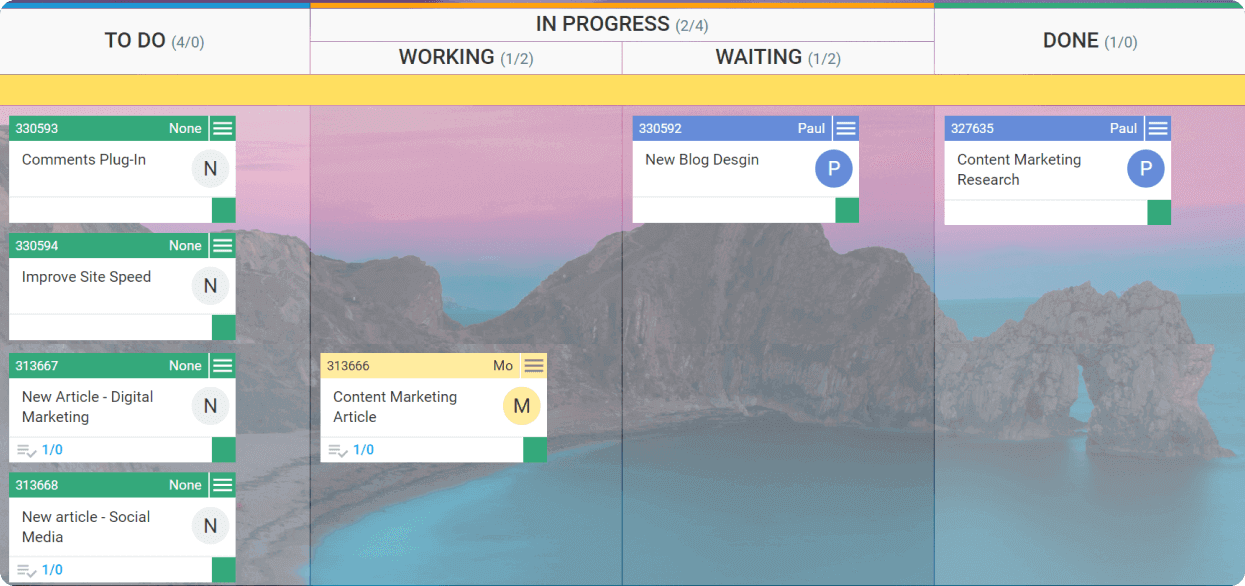 Modeling your workflow on a Kanban board
Modeling your workflow on a Kanban board
You can think of this as value stream mapping. Make sure you visualize both value-adding and non-value-adding steps in your process, so you can better understand the flow of work.
STEP 6: Discover Classes of Service
A Class of Service is a set of policies that help Agile teams prioritize work items to cope with uncertain and unpredictable situations. Kanban defines 4 classes of services based on the cost of delay profile of a work item:
- Expedite - for work items with critical priority and a very high cost of delay.
- Fixed delivery date - for assignments with a fixed date and a high cost of failing to deliver on time.
- Standard - for everyday work items with a moderate cost of delay.
- Intangible - for assignments with little to no cost of delay.
In practice, you can collect examples of different types of requests depending on their delay cost. For each sample, you should define what characteristics classify the request into a specific service class. Then, you can use Kanban swimlanes to visualize them in your process.
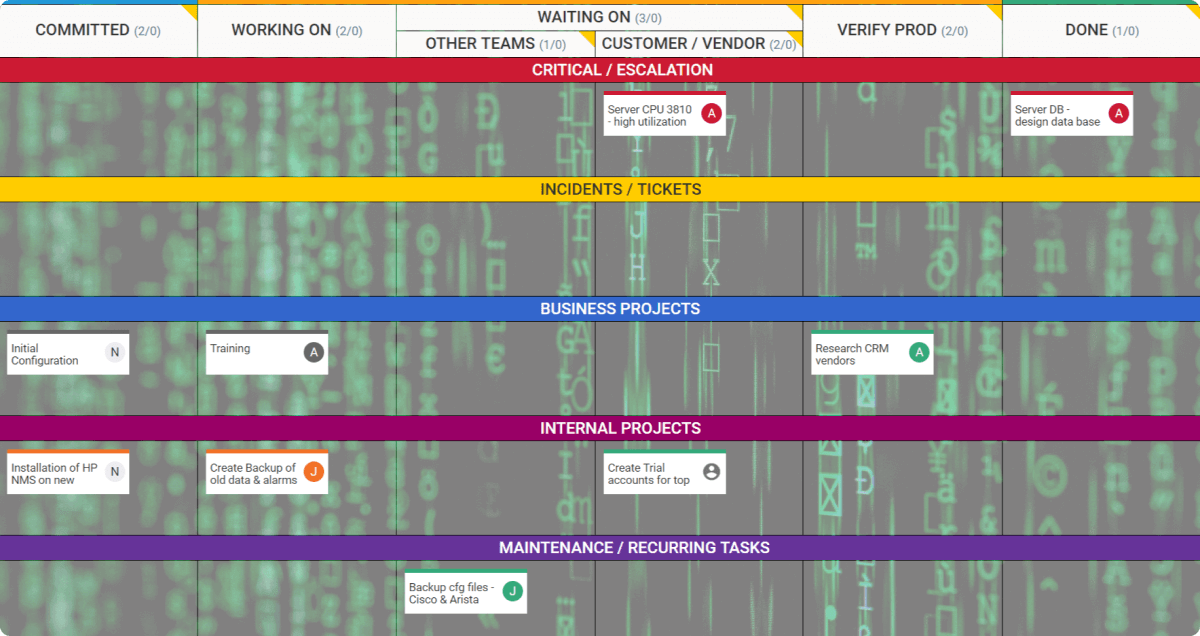 Using swimlanes on a Kanban board
Using swimlanes on a Kanban board
STEP 7: Design the Kanban System
We have come to the heart of the Kanban System design. Based on the insights gained in the prior steps, you can begin to assemble the system that reflects the needs of your customers as well as the capabilities of your team.
I won't go into detail about designing a Kanban board because it's a topic on its own, but I'll give you some guidelines. And remember that merely visualizing your work on a Kanban board doesn't mean you have a Kanban system in place.
To create one, here are a few practices you should consider:
- Introduce work-in-progress (WIP) limits. They will help you create a true pull system in your workflow by limiting the amount of work you execute simultaneously. Thus, you will be able to deliver faster.
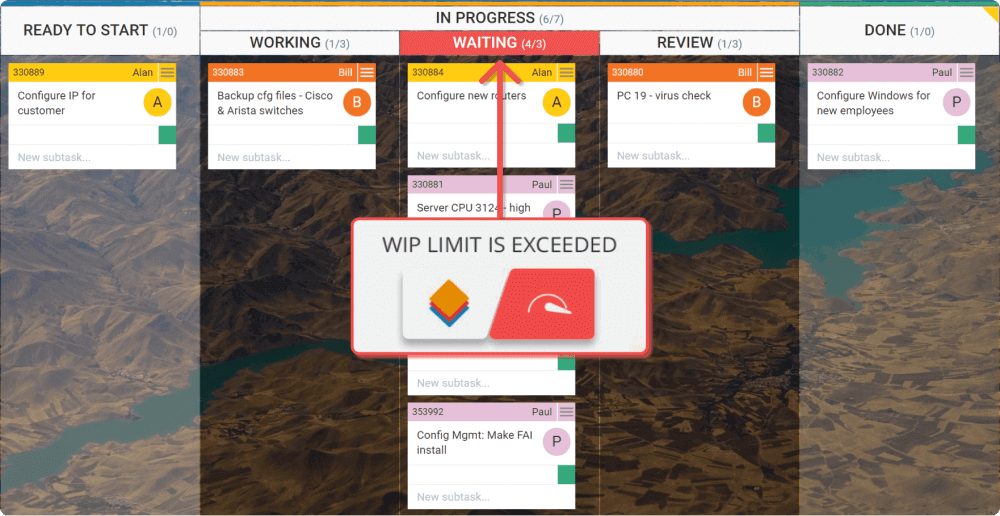 Visualizing WIP limits on a Kanban board
Visualizing WIP limits on a Kanban board
- Establish explicit policies for the workflow. They might cover everything from what "Done" means for your process to service-level agreements.
- Implement Kanban Cadences (or feedback loops). They are a suggested series of meetings that can foster bi-directional communication at all necessary levels of your organization.
- Track your progress by monitoring delivery metrics, such as cycle time, lead time, and throughput. This way, you can reflect on what happened in your process and make data-driven decisions for future actions.
Many practices constitute a complete Kanban system, so to learn more, we recommend you take a look at the Kanban Maturity Model.
STEP 8: Socialize the Design and Negotiate Expectations
The last step emphasizes the importance of getting feedback from other relevant internal and external parties so you can collect observations from both perspectives. It is also recommended to hold workshops with different teams from dependent services to sync the work processes of multiple Kanban systems.
At the End of the Day...
STATIK is a great way to answer questions such as "why we're introducing a new work approach?" in the first place.
While the technique's steps aren't mandatory, they will help you avoid repeating the story I told you at the beginning.
And remember, Kanban is all about continuous improvement. So, when implementing new practices, aim to collect internal and external feedback. This way, you can build a system that works for your own unique environment.

Neli Videnova
Marketing Expert
Neli is an ambitious and optimistic person passionate about social media, SEO, and creative writing. A good taste admirer with interests in cooking, fashion, and traveling.



